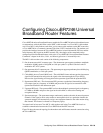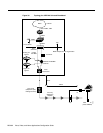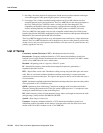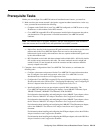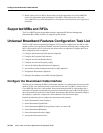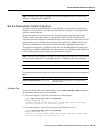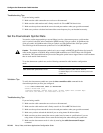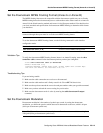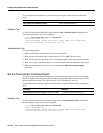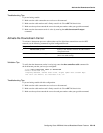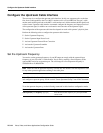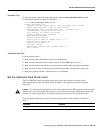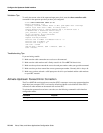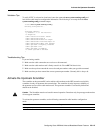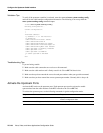
Description of Cisco uBR7246 Cable Router
Configuring Cisco uBR7246 Universal Broadband Router Features VC-135
Description of Cisco uBR7246 Cable Router
As shown in Figure 38, the Cisco uBR7246 serves as an interface between a WAN backbone and an
HFC cable plant. Typically installed at a CATV headend, the Cisco uBR7246 is often located with
the following internet service provider-related components:
• Ethernet switch
• Proxy server
• WAN Router
The Ethernet switch is used to reduce traffic on the WAN backbone.
The proxy server usually functions as a Web cache for host computers, and the DHCP/TFTP server
for cable modems. DHCP for host computers in the HFC plant is often handled over the WAN. The
WAN router provides a gateway to the data network.
On the RF side, the downstream port is assigned a 6-8 MHz channel slot at a standard broadcast
CATV frequency. An upconverter device is used to convert the 44 MHz intermediate frequency (IF)
output to the assigned slot. In North America, carrier frequencies in the forward plant are assigned
between 54-860 MHz. After upconversion, the signal is combined with other analog TV or digital
TV signals and sent to the transmit input of a fiber transceiver.
The receive input of the fiber transceiver is connected to an upstream port of the Cisco uBR7246.
The upstream port is assigned a 0.2-3.2 MHz frequency band in the reverse plant. In North America,
carrier frequencies in the reverse plant are between 5-42 MHz.
The fiber transceiver is connected to up to 80 kilometers of optical fiber. Signals are carried in analog
form to a neighborhood where they terminate in a fiber node. The fiber node, located on a telephone
pole or in an underground box, converts the optical signal back to an electrical signal, which is
passed on to a two-way, distribution amplifier system. The distribution amplifier system passes
through the neighborhood where it is tapped off to individual CATV subscribers. Typically, there are
500-1500 homes passed per fiber node.
A coaxial cable delivers the signal from the tap to a subscriber’s drop box. From the drop box, the
signal is split and cabled to consumer CATV appliances. In addition to analog or digital television,
the subscriber obtains data services using a cable modem appliance, like the Cisco uBR904 cable
modem.
Benefits of Cisco uBR7246
The Cisco uBR7246 features bring value to the digital broadband network by:
• Enabling the cost-effective deployment of advanced routing capabilities deep into the cable
network.
• Combining the power and functionality of a Cisco 7200 series router with the high-speed network
access of a Cable Modem Termination Shelf (CMTS). By combining these two essential
functions, the Cisco uBR7246 router conserves valuable headend rack space, and it allows cable
operators to deploy routing capability in every CMTS location, which improves network
performance.



